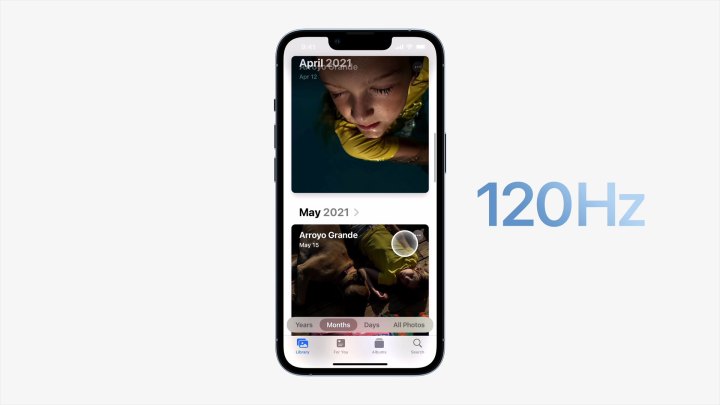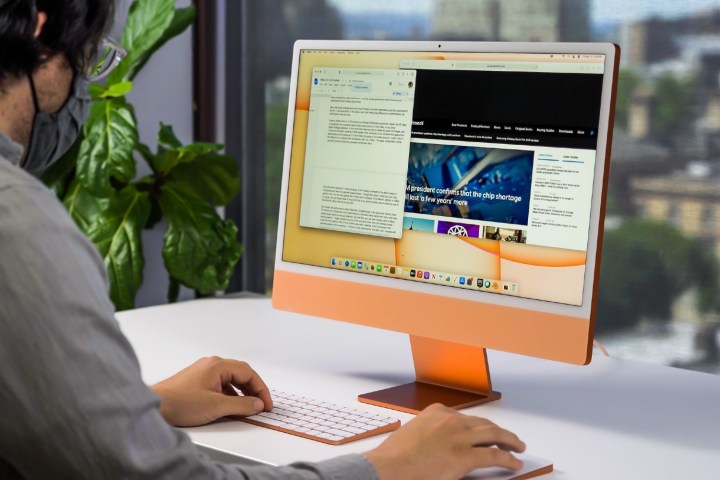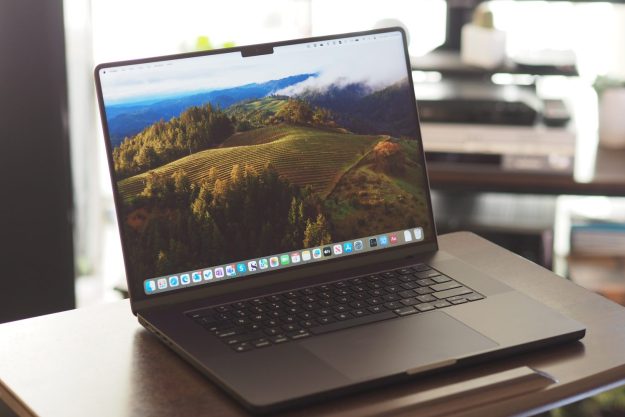At its California Streaming event yesterday, Apple announced it was bringing its adaptive refresh rate technology, dubbed ProMotion, to the iPhone 13 Pro and iPhone 13 Pro Max. This dynamically adjusts the display’s refresh rate up to 120Hz depending on what you are doing. It’s pretty neat.
The thing is, ProMotion has been on the iPad Pro since 2017, and now of course it’s on iPhones. But there’s one piece missing from the puzzle: The Mac. And I say it’s about time Apple put that right.
Not just for games

Traditionally, any laptop offering refresh rates over 60Hz has been seen as a gaming device, and most of the progress here has indeed been made by gaming-focused companies. Some laptops even come with ridiculously fast 360Hz screens, should you want one.
All of which is to say that the technology for high refresh rates is certainly there. But Apple has never really committed to Mac gaming and barring a few dabbles like Apple Arcade, most Mac users know their device is not cut out for hardcore gaming.
Yet, gaming isn’t the sole focus of ProMotion. When Apple unveiled ProMotion at its California Streaming show, the company mentioned gaming, but only as one of many benefits. All of Apple’s own tech demonstrations focused more on everyday use, such as swiping between photos or scrolling down a page, and it was only when Apple wheeled out some third-party developers that gaming got any airtime. Clearly, Apple sees ProMotion as much more than just a game enhancer.
Other companies are going down a similar path. Lenovo now offers non-gaming laptops that have 90Hz and even 120Hz refresh rates, as does MSI with its Creator Z16. High refresh rates are entering the mainstream as people realize the technology has benefits outside of fast-paced shooters. That’s great news for the MacBook Pro.
Apple’s advantage

With ProMotion, Apple has something else up its sleeve. While rivals have added high refresh rate screens to their laptops, these panels can only go at one speed, all the time. The clever thing about ProMotion is it is adaptive, so it can speed up and slow down as required, depending on what you are doing.
Just like in a phone, that’s important in a laptop because it can have a big impact on laptop battery life. A high refresh rate is brilliant when you’re playing a game or flicking through files, but a real resource hog when you’re just reading a static page of text. And no one wants a laptop that can’t last through the day because an unnecessary feature is draining its battery.
By bringing ProMotion to the MacBook Pro, Apple could give people all the benefits of a 120Hz screen while still keeping the incredible battery life the M1 MacBook Pro has become known for.
The iMac problem

The problems start, however, when we start talking about the iMac. The MacBook Pro 13 has a 2560 x 1600 resolution, while the MacBook Pro 16 runs at 3072×1920. Getting that many pixels to run at 120Hz would be a challenge, but not impossible. After all, the iPhone 13 Pro Max has ProMotion boasts a 2778 x 1284 resolution, which isn’t much less than the MacBook Pro 13 in terms of pixel count.
The iMac, however, has a 4480 x 2520 screen — nearly three times the pixels of the MacBook Pro 13. And that’s just the 24-inch iMac. The 27-inch iMac and its 5K display pack in even more pixels, and that’s assuming Apple doesn’t bump it up to 6K when it eventually releases a redesigned high-end iMac. Getting that many pixels to refresh up to 120 times a second without a large price increase is a big ask.
What’s more, Apple tends to keep (more or less) feature parity between its MacBook Pro and iMac screens, besides the obvious resolution differences. Both devices come with 500 nits of brightness, both support the P3 wide color gamut, and both have True Tone technology. The sheer pixel count of the iMac could make giving it ProMotion prohibitively expensive, but Apple might not want to add ProMotion to the MacBook Pro if it’s going to be absent from its all-in-one desktop computer.
Still, that’s not to say it’s impossible. If anyone has the resources and know-how to pull something like this off, it’s Apple. We already see gaming laptops and monitors at 4K with refresh rates of up to 120Hz.
And even assuming a ProMotion iMac is off the table, I still think a 120Hz MacBook Pro deserves its time in the sun. It would be a great way to earn that Pro moniker and offer something that no laptop rival can touch. The chance to pull ahead of the competition might be enough to convince Apple it is a worthwhile endeavor.
Editors' Recommendations
- The biggest threat to the MacBook this year might come from Apple itself
- Which color MacBook should you buy? Here’s how to pick
- Another excellent laptop challenges the MacBook Pro and falls short
- I tried the Apple Vision Pro. Here’s why it won’t replace my iPhone
- The MacBook Pro is a good enough gaming laptop for me




